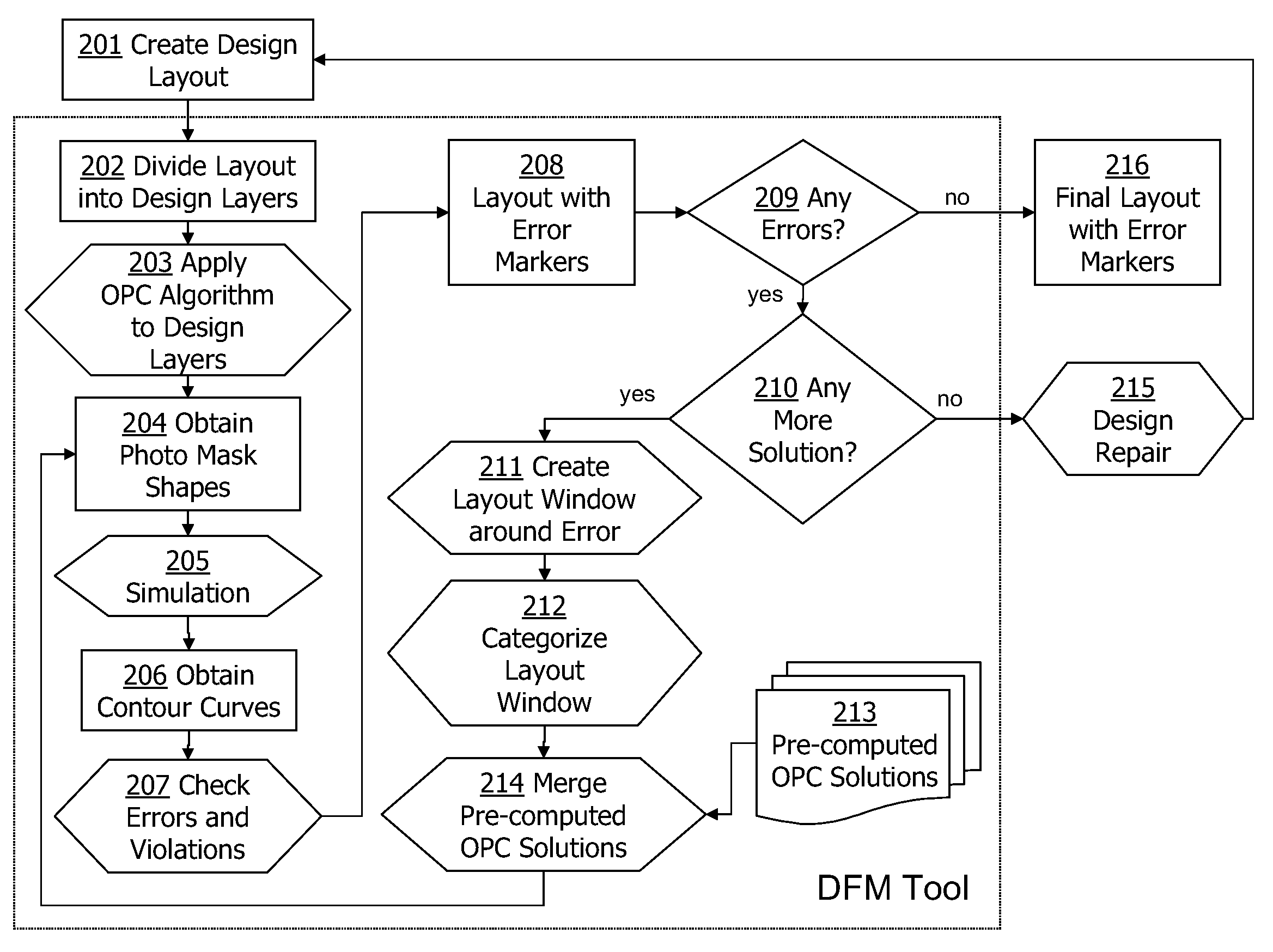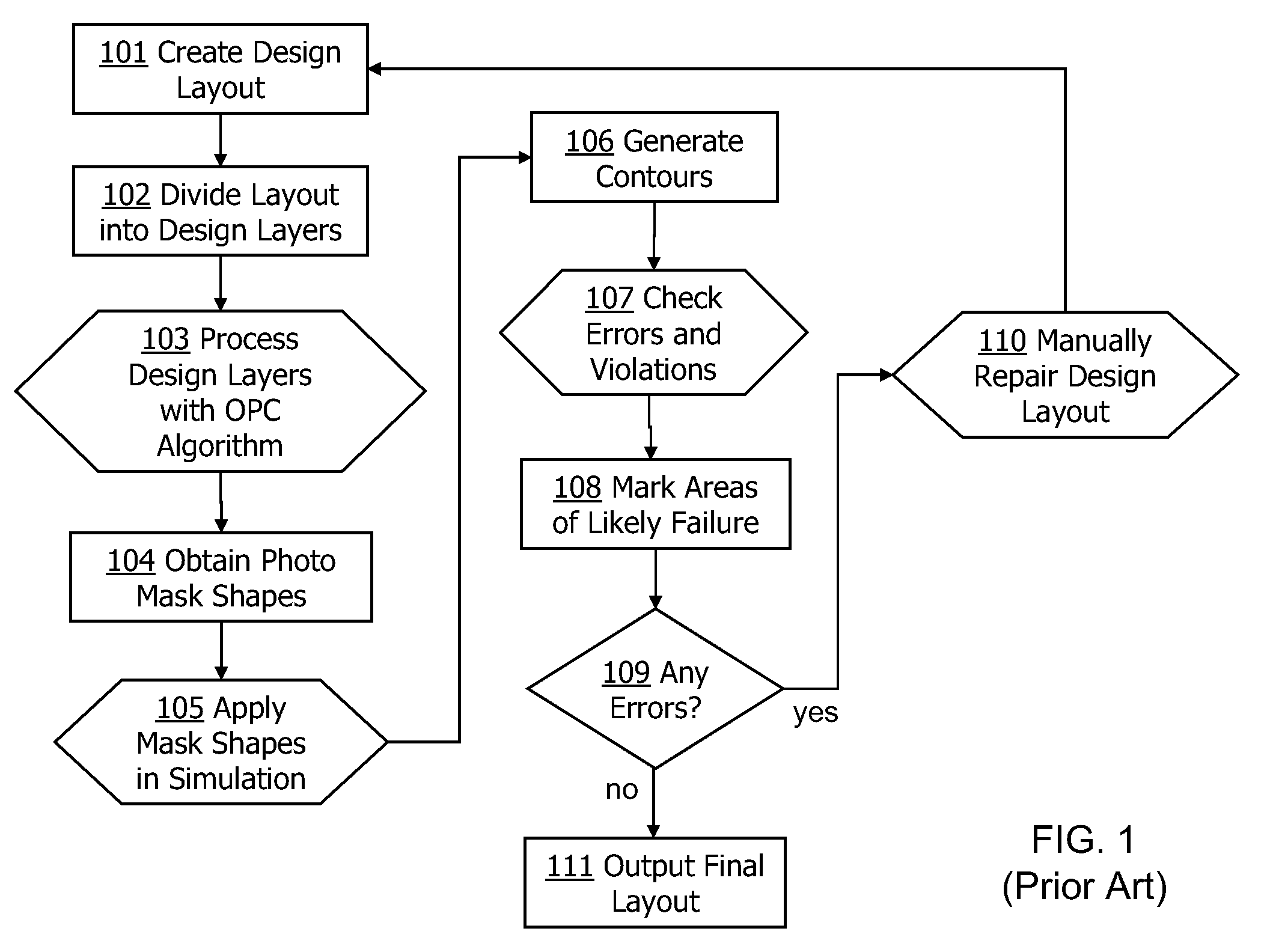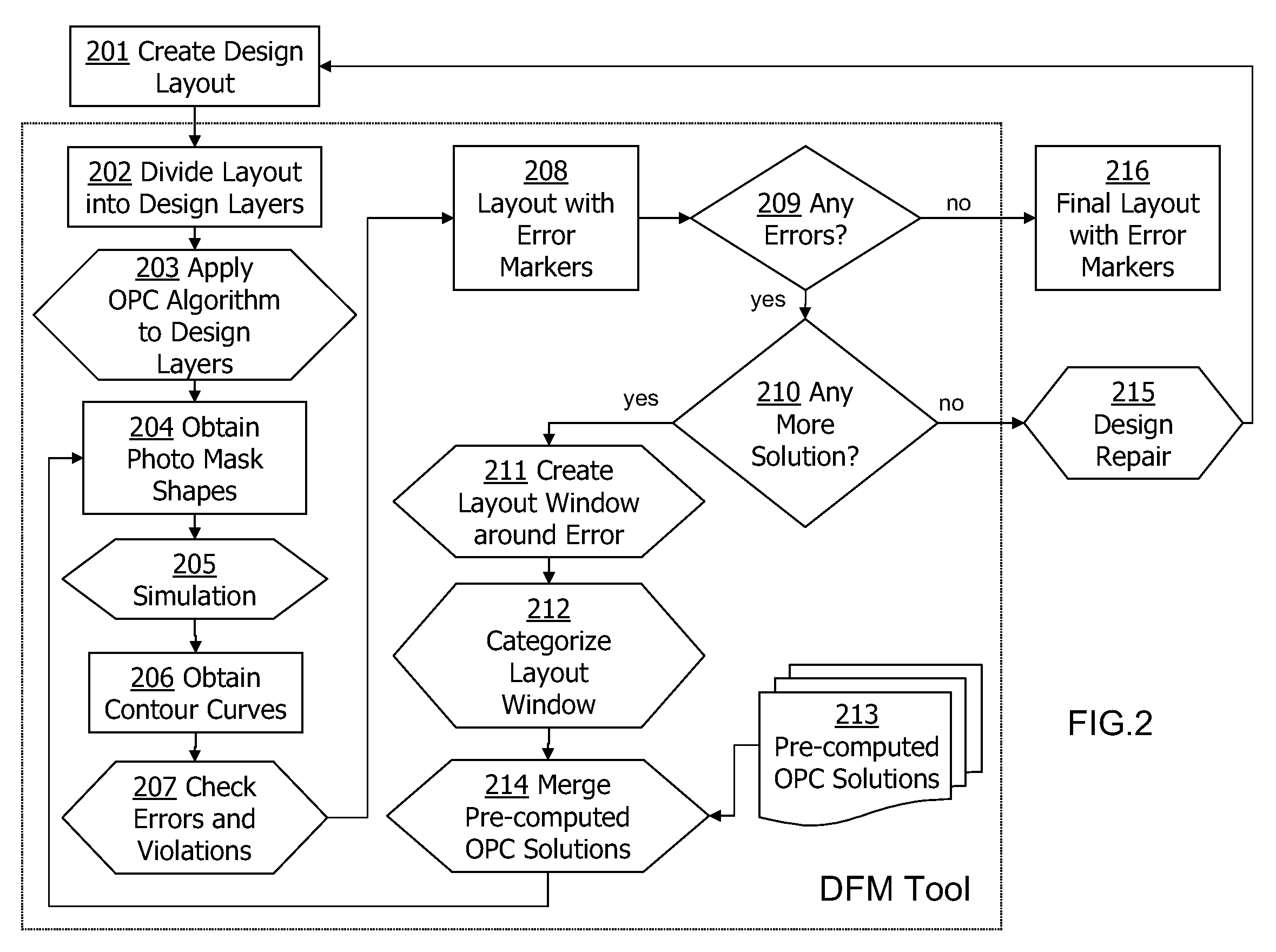Short path customized mask correction
- Summary
- Abstract
- Description
- Claims
- Application Information
AI Technical Summary
Benefits of technology
Problems solved by technology
Method used
Image
Examples
Embodiment Construction
[0010]Embodiments of the present invention provide a method of performing photo-mask correction. The method includes steps of identifying a hot-spot in a photo-mask that violates one or more predefined rules; creating a window area in the photo-mask surrounding the hot spot; categorizing the window area; selecting a local solution from a library of pre-computed solutions based on the category of the window area; and applying the local solution to the hot spot.
[0011]In one embodiment, the step of categorizing the window area includes assigning a category to the window area based upon a type of violation of the hot spot being surrounded by the window area. In another embodiment, the pre-computed solutions are determined through improvement of both exposure source shapes and mask shapes.
[0012]In one embodiment, the method further include, if no solution is available from the library of pre-computed solutions based upon the category of the window area, repairing a design layout from whi...
PUM
 Login to view more
Login to view more Abstract
Description
Claims
Application Information
 Login to view more
Login to view more - R&D Engineer
- R&D Manager
- IP Professional
- Industry Leading Data Capabilities
- Powerful AI technology
- Patent DNA Extraction
Browse by: Latest US Patents, China's latest patents, Technical Efficacy Thesaurus, Application Domain, Technology Topic.
© 2024 PatSnap. All rights reserved.Legal|Privacy policy|Modern Slavery Act Transparency Statement|Sitemap



